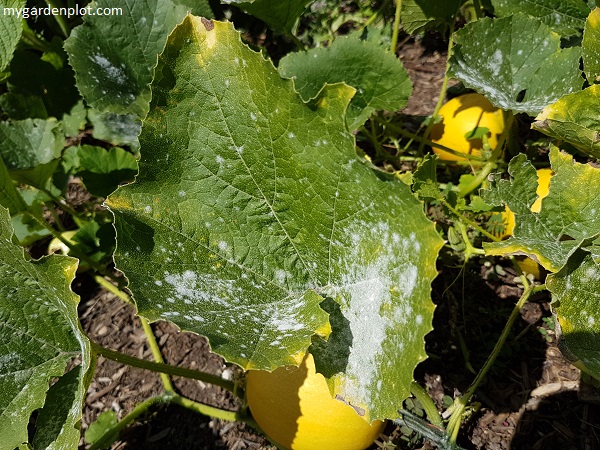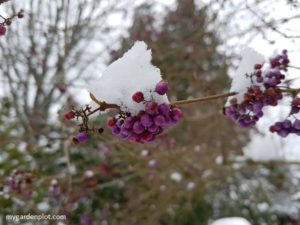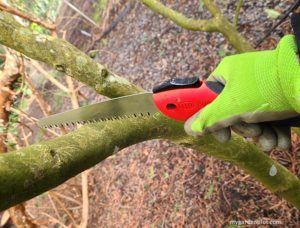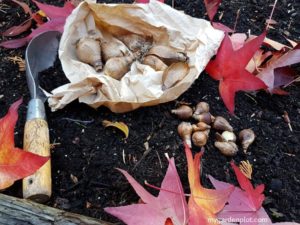What Is Powdery Mildew And How To Identify This Plant Disease
Powdery mildew is a fungal disease that can potentially affect many plants. Different kinds of fungal pathogens cause powdery mildew. Thankfully, powdery mildew is a treatable problem. Find below solutions to control and prevent powdery mildew in your garden and how to treat affected plants.
Powdery mildew afflicts shrubs, trees, and vegetables by coating the upper surfaces of leaves and other plant parts. It is relatively easy to identify an affected plant. It may initially cover the foliage appearing as white or light gray powdery patches – looks somewhat like fine talc powder. It eventually spreads to other parts of the plant and can do so rather rapidly. Susceptible plants afflicted with powdery mildew may look terrible but the disease does not kill it. However, chronic powdery mildew problem will stunt and distort growth, leaving the plant’s overall health to be compromised and vulnerable to pests and other diseases to set in. When you find powdery mildew in your garden, it is a problem that should be managed as soon as you see it.
What Conditions Cause Powdery Mildew
Powdery mildew thrives when there is a combination of dry soil and high humidity. Add warm days and cool nights, which typically occurs at the end of summer and early autumn, and you have the perfect environment for powdery mildew.
Having dry soil around the plant’s root base while watering from overhead can exasperate the situation. This scenario plus a moist, cool atmosphere is favourable for powdery mildew. In the Pacific Northwest, this combination of conditions starts in September.
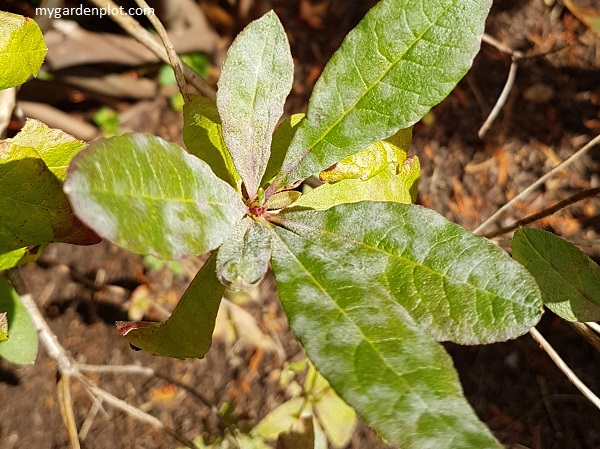
How To Prevent And Control Powdery Mildew
Prevention is the most reliable method of controlling powdery mildew. Since dry soil contributes to powdery mildew, it goes without saying that deep watering at soil level is best for plants. Adding mulch to the garden bed helps retain moisture in the soil and the effects of drying out and stressing the plant.
Overhead irrigation systems also have their part in spreading the spores of powdery mildew from one affected plant to another. Additionally, setting the irrigation system to come on in the afternoon or the evening can contribute to mildew problems. It is best to water deeply and early in the morning to allow to foliage to dry. If possible, adjust irrigation systems to water at soil levels to keep foliage dry when watering. Or hand water or use soaker hoses.
Good air circulation is needed too to prevent powdery mildew. Pruning stems and thinning plants or removing large shrubs planted too close together will help with the airflow. Remember to continuously sanitize your shears and pruning tools to limit the spread of the mildew spores.
Learn from mistakes and choose resistant shrubs and trees and plant in the right place. Stressed susceptible varieties planted in the wrong location ultimately encourages diseases and pest problems.
Rhododendron Powdery Mildew
Some species of rhododendron and azaleas are particularly susceptible to powdery mildew. It can develop as off white or yellowish blotches on the upper level of the leaf’s surface before spreading. And the causes are usually the same as with other plants, dry soil and wet conditions and often insufficient sunshine. Leaves become misshapen and drop prematurely. With rhododendrons, the powdery mildew can overwinter on the underside of evergreen foliage. Remove affected areas, apply spray treatment, water deeply at the root level and limit overhead watering.
Our garden had an east-facing area shaded by a western red-cedar tree that seemed to particularly prone to powdery mildew. The mature rhododendrons and deciduous azaleas that were planted years ago in that area struggled with powdery mildew. In this situation, a lack of sun played its part. Even though we thinned out the cedar by removing deadwood and a few congested branches to allow more light through, the powdery mildew problem persisted. After several attempts to resolve this mildew problem, we gave up and removed the affected shrubs and invested in disease-resistant plants that were better suited to a dappled sunlight location.
Treatment Solutions For Powdery Mildew
Various spray solutions are either commercially sold or made at home to help treat powdery mildew. Always consider using the least toxic method in your garden by using natural solutions and organic remedies first. Before starting any treatment, remove any foliage that is badly affected by the powdery mildew and destroy. Do not compost any disease plants.
Milk Spray: Mix 2 parts milk to 3 parts water (basically 40% milk to 60% water) and apply weekly. Even a mixture of 1 part milk to 3 parts water can be useful when applying for a preventative measure. Use a handheld sprayer or, for larger jobs, a pump-up gallon sprayer and spray the entire plant, including the underside of foliage. Apply first thing in the morning and on a dry, sunny day.
Baking Soda Mixture: Potassium bicarbonate (better option than sodium bicarbonate) sprays for mildew treatment are readily available off the shelf. Or mix five teaspoons of baking soda with 1 gallon of water, spraying once every second week. Start spraying as soon as powdery mildew is detected. With spray treatments applied between spring and autumn, apply early in the morning. This allows the solution to dry and limit any harm to beneficial insects.
Garden Sulphur and Horticultural Oils: Sulphur and horticultural oils (dormant oil) can also effectively control powdery mildew. These are applied before the foliage emerges and becomes infected. Other suitable fungicides may be more suitable for sulphur-shy plants available at your garden centre.
When all fails, we may need to recognize that susceptible plants that are affected were likely planted in the wrong place and just need to be moved and replaced with a resistant variety.
Powdery Mildew On Vegetables And Fruit Trees
Powdery mildew is not toxic. However, if the powdery mildew is on the fruit, it is not recommended that you eat it. Powdery mildew that appears on the foliage rather than on the fruit or vegetable, such as with zucchini, should be okay to consume. Apply the milk spray treatment above as soon as you see powdery mildew in your kitchen garden.
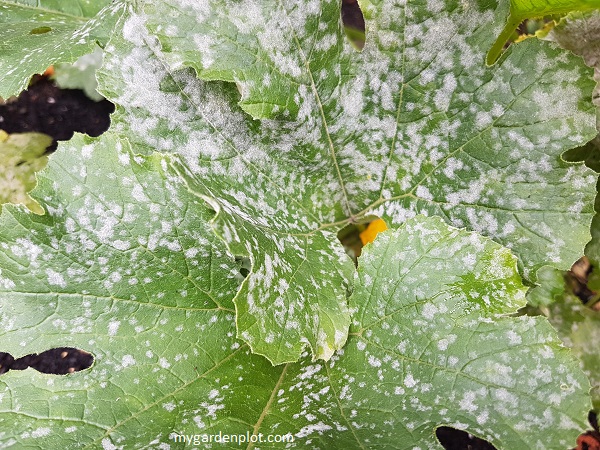
View the choice of gardening supplies online for maintaining your garden bed and lawn. Select art and sculptures to add fun element in your garden, and all the products for making a vegetable patch. Browse the latest deals for garden supplies. And check out the awesome deck decorations and patio furniture, and the necessary garden tools.

